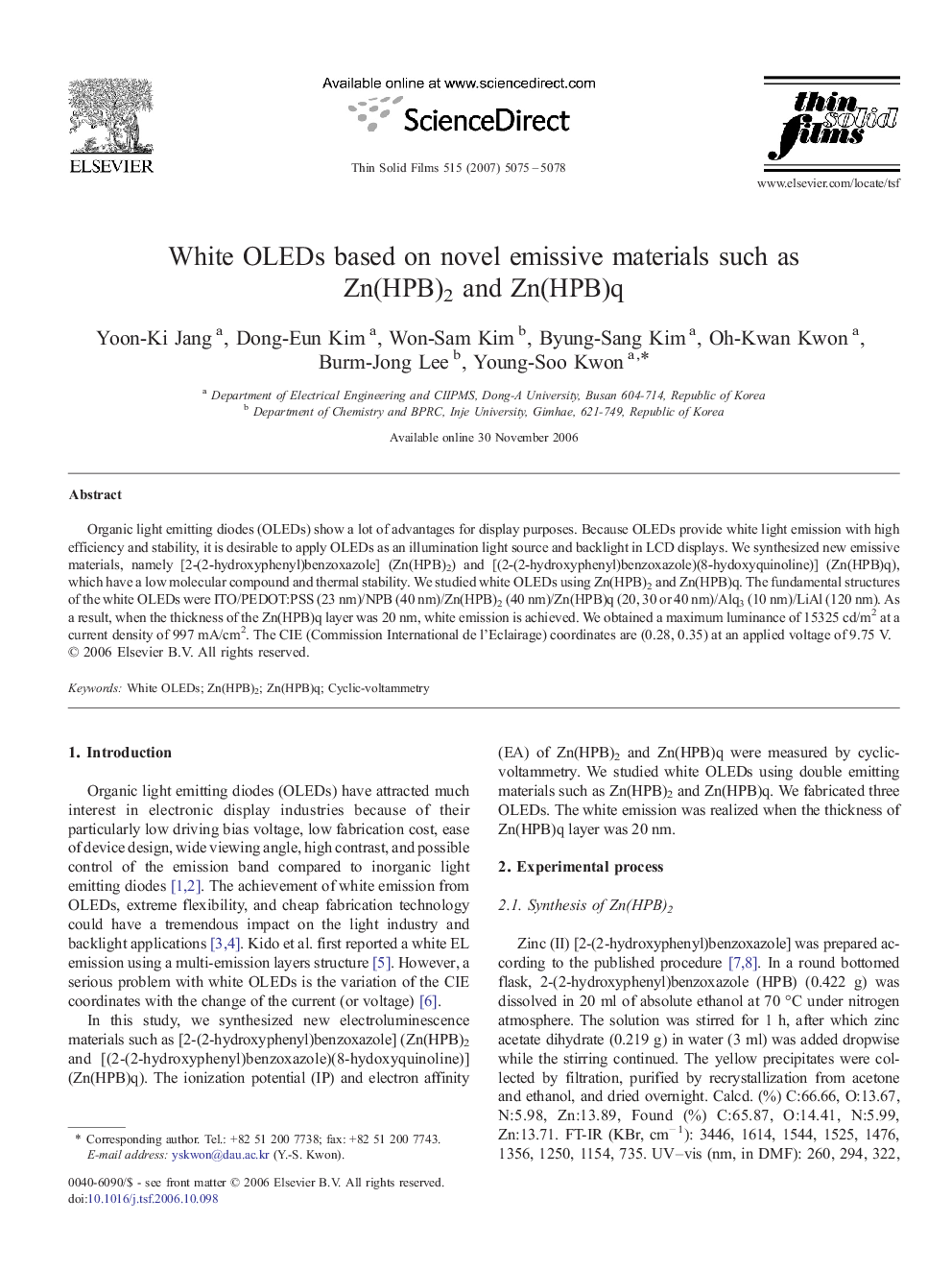| Article ID | Journal | Published Year | Pages | File Type |
|---|---|---|---|---|
| 1676338 | Thin Solid Films | 2007 | 4 Pages |
Organic light emitting diodes (OLEDs) show a lot of advantages for display purposes. Because OLEDs provide white light emission with high efficiency and stability, it is desirable to apply OLEDs as an illumination light source and backlight in LCD displays. We synthesized new emissive materials, namely [2-(2-hydroxyphenyl)benzoxazole] (Zn(HPB)2) and [(2-(2-hydroxyphenyl)benzoxazole)(8-hydoxyquinoline)] (Zn(HPB)q), which have a low molecular compound and thermal stability. We studied white OLEDs using Zn(HPB)2 and Zn(HPB)q. The fundamental structures of the white OLEDs were ITO/PEDOT:PSS (23 nm)/NPB (40 nm)/Zn(HPB)2 (40 nm)/Zn(HPB)q (20, 30 or 40 nm)/Alq3 (10 nm)/LiAl (120 nm). As a result, when the thickness of the Zn(HPB)q layer was 20 nm, white emission is achieved. We obtained a maximum luminance of 15325 cd/m2 at a current density of 997 mA/cm2. The CIE (Commission International de l'Eclairage) coordinates are (0.28, 0.35) at an applied voltage of 9.75 V.
